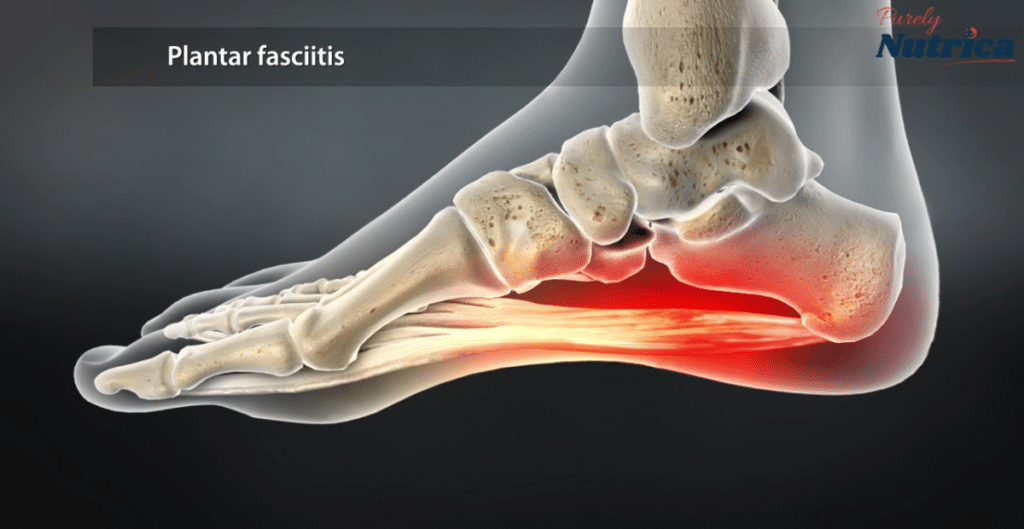Can a Chiropractor Help with Plantar Fasciitis?
Plantar fasciitis is a common condition that causes heel pain and discomfort due to inflammation of the plantar fascia, a thick band of towel that runs along the bottom of the bottom. Many individuals look for different forms of treatment in order to ease their discomfort and facilitate healing.Chiropractic care is one similar option that can offer relief. This article explores how chiropractors, such as a joint chiropractor can help with plantar fasciitis, the ways they use, and what to anticipate from treatment.
What is Plantar Fasciitis?
Plantar fasciitis is characterized by pain in the heel or the bottom of the bottom, frequently described as a sharp, pecking sensation. It generally results from inordinate strain or overuse of the plantar fascia, leading to inflammation. Common causes include repetitive stress, poor footwear, and abnormal bottom mechanics.
Why Consider Chiropractic Care?
Chiropractic care is frequently sought for its non-invasive approach to managing musculoskeletal issues. Chiropractors including specialists like infant chiropractor and scoliosis chiropractor aim to provide relief from conditions such as plantar fasciitis by addressing the root cause of discomfort through do-it-yourself modifications and other methods.
Understanding Plantar Fasciitis
The article ahead would look into the causes, symptoms of plantar fasciitis, its impact, and later in detail, the role of Chiropractic Care in Managing Plantar Fasciitis.
Causes and Symptoms
The primary cause of plantar fasciitis is repeated stress on the plantar fascia, which can lead to micro-tears and inflammation. Factors contributing to the condition include:
- Overuse: Prolonged standing or excessive walking.
- Footwear: Wearing shoes with inadequate support or cushioning.
- Foot Mechanics: Issues such as flat feet or high arches that alter weight distribution.
Symptoms typically include:
- Heel Pain: Sharp pain, especially noticeable with the first steps in the morning.
- Tenderness: Pain at the bottom of the heel or along the arch.
- Swelling: Mild swelling in the affected area.
Impact on Daily Life
Plantar fasciitis can significantly impact daily conditioning, causing discomfort while walking, standing, or indeed sitting. The pain may intrude with exercise routines and affect overall quality of life.
Role of Chiropractic Care in Managing Plantar Fasciitis
What Chiropractors Do
Chiropractors concentrate on diagnosing and treating musculoskeletal diseases, including issues affecting the bases and lower branches. Their approach involves assessing and addressing alignment issues, muscle imbalances, and biomechanical factors contributing to plantar fasciitis.
Techniques Used in Chiropractic Care
Chiropractors use a variety of techniques to help manage plantar fasciitis, including:
- Foot Adjustments: Gentle adjustments to the feet and ankles to improve alignment and function.
- Soft Tissue Therapy: Techniques such as massage to release tension in the plantar fascia and surrounding muscles.
- Stretching and Strengthening Exercises: Exercises designed to stretch the calf muscles and strengthen the foot and lower leg muscles.
- Orthotic Recommendations: Advice on custom or over-the-counter orthotics to support proper foot alignment and reduce strain on the plantar fascia.
Factors Influencing the Effectiveness of Chiropractic Care
There are several factors that need to be analyzed before the chiropractic care begins.
Severity of the Condition
The inflexibility of plantar fasciitis can impact the effectiveness of chiropractic care. Treatment for mild to moderate cases often yields good results, while severe or recurrent cases may require a more thorough approach, possibly involving new methods or therapies.
Patient’s Overall Health and Lifestyle
A patient’s overall health and life play a significant part in recovery. Individuals who maintain a healthy weight, engage in regular exercise, and follow a balanced diet may witness better results. Following the chiropractor’s advice is essential for getting the best outcomes as well.
Compliance with Treatment Plans
Adherence with the chiropractor’s treatment plan is essential for managing plantar fasciitis effectively. This includes attending listed sessions, performing recommended exercises, and making necessary life adaptations.

What to Expect from Chiropractic Care for Plantar Fasciitis
Below is a guideline to what the chiropractic care would look like.
Initial Assessment
The chiropractor will begin with a thorough assessment, including a review of medical history, physical examination, and conceivably gait analysis. This helps in understanding the root cause of the condition and formulating an applicable treatment plan.
Treatment Sessions
Treatment sessions may involve:
- Manual Adjustments: To correct misalignments and improve foot and ankle function.
- Soft Tissue Manipulation: To reduce muscle tension and alleviate pain.
- Customized Exercises: To address specific issues and support recovery.
Duration of Treatment
The duration of chiropractic treatment can vary grounded on the inflexibility of the condition and the patient’s response to care.A longer period of treatment may be required to get long-lasting relief, even if initial benefits could be seen in a few weeks.
Complementary Treatments
Physical Therapy
Physical therapy, which focuses on certain exercises to strengthen and stabilize the foot and lower limbs, can be used in conjunction with chiropractic care. When physical therapy and chiropractic care are combined, the results might be improved overall.
Orthotics
To relieve strain on the plantar fascia and enhance foot alignment, customized or without a prescription orthotics can offer more support and cushioning for the feet.
+Lifestyle Adjustments
Making changes to footwear, incorporating stretching routines, and avoiding conditions that complicate pain can support the effectiveness of chiropractic care and contribute to overall recovery.

When to Seek Additional Medical Attention
Sometimes chiropractic care can not help alone and there must be other medical treatments that need to be undergone. Some of those factors are discussed below.
Signs That Chiropractic Care Alone May Not Be Enough
If symptoms persist or worsen despite chiropractic treatment, it may be necessary to seek additional medical evaluation. Signs that further intervention may be needed include:
- Severe or Persistent Pain: Pain that does not improve with chiropractic care.
- Significant Swelling or Discoloration: Indicating potential complications.
- Functional Limitations: Difficulty with basic activities due to pain.
Considering Other Medical Interventions
In cases where chiropractic care and reciprocal treatments don’t give acceptable relief, other medical interventions may be considered. These may include corticosteroid injections, shockwave remedy, or, in rare cases, surgical options.
Patient Experiences and Case Studies
Success Stories
Numerous cases have reported significant advancements in symptoms and overall quality of life through chiropractic care. The effectiveness of a holistic program that incorporates workouts, life modifications, and handmade adaptations is often highlighted by success stories.
Realistic Outcomes
Although problems might differ, chiropractic therapy can be generally beneficial. Sustaining motivation and adherence to the treatment plan requires realistic expectations and an awareness that recovery is a journey.
Tips for Maximizing Results
Here are several additional tips to maximize the positive impacts of the treatment.
Adhering to the Treatment Plan
Following the chiropractor’s recommendations, including attending all scheduled sessions and performing prescribed exercises, is essential for achieving the best results.
Maintaining Foot Health
Invest in proper footwear with good support and cushioning. Avoid high-impact activities that strain the feet and incorporate stretching routines to maintain flexibility.
Managing Weight
Maintaining a healthy weight can reduce stress on the feet and support overall recovery. A balanced diet and regular exercise can contribute to better outcomes.
Conclusion
Chiropractic care can be an effective treatment option for managing plantar fasciitis, offering relief through different ways similar as spinal adaptations, soft towel remedy, and customized exercises. The success of chiropractic treatment depends on factors similar to the inflexibility of the condition, patient compliance, and overall health. By combining chiropractic care with reciprocal treatments and life adaptations, individualities can enhance their chances of achieving significant relief and enhancing their quality of life.



